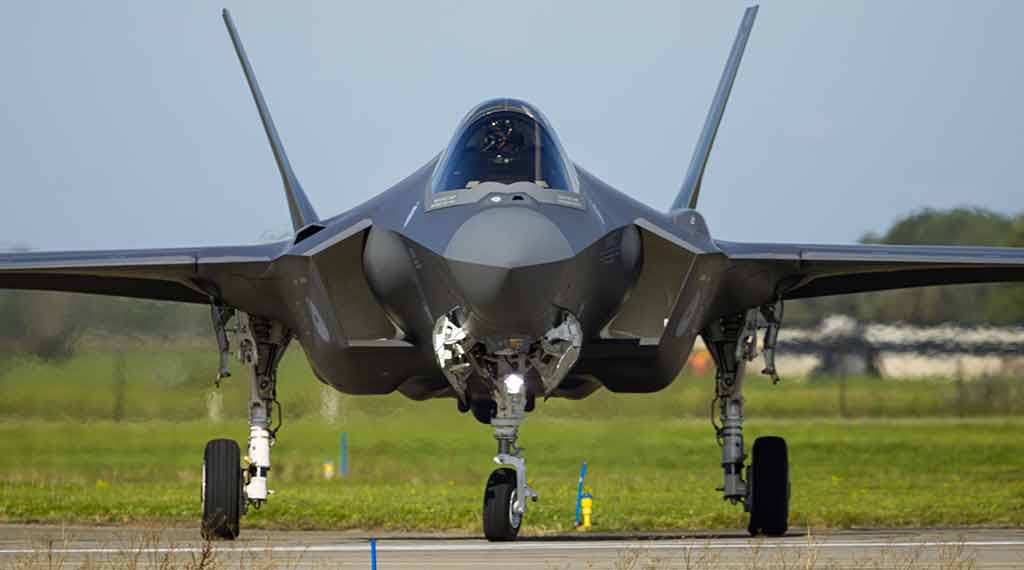
Russian state media have circulated unverified claims that an Israeli F-35I Adir failed to strike its target due to interference from Russian electronic warfare systems.
-While these assertions lack concrete evidence, they highlight concerns about the F-35’s potential vulnerabilities to cyber and electronic warfare, particularly due to its advanced Autonomic Logistics Information System (ALIS).
-Experts note that while the F-35’s sophisticated systems could be targets for cyber attacks, there is no confirmed instance of such interference affecting its operational capabilities.
-Russia’s increased use of electronic warfare in Ukraine underscores the importance of cybersecurity, but the F-35 remains a highly capable and resilient platform.
Debunking Myths: The F-35 and Russia’s Electronic Warfare Claims
Years back, Russian-state media widely circulated videos supposedly revealing an Israeli F-35 failing to counter robust electronic suppression.
According to media sources, an Israeli F-35I Adir could not strike its intended target during military drills due to Moscow’s electronic warfare systems.
While this claim appears unlikely for various reasons, electronic warfare remains a vital pillar of the Kremlin’s strategic military and defense approach.
In fact, Russian forces are utilizing jamming and interception capabilities more and more amidst its ongoing invasion of Ukraine.
The report suggesting Russia was able to thwart arguably the most advanced fighter jet on the planet could be a veiled threat to Ukraine. Should the F-35 worry?
The F-35 Claim
According to a defense analyst at the EurAsian Times, the video circulated by Russian-state media outlets depicts an “air-to-ground munition, reportedly fired from an F-35, missing its target, which the website claims are owing to Electronic Warfare interference from Russian systems.”
While this claim is dubious at best, it highlights the F-35’s potential vulnerability to cyber warfare attacks.
The F-35 fifth-generation stealth fighter is a powerhouse and is largely enabled by advanced technology and weapons systems.
Incorporating highly-sophisticated computerized systems has enhanced the jet but leaves it more exposed than its less-technological predecessors.
F-35 Systems
The jet’s Autonomic Logistics Information System (ALIS) is one of the F-35’s unprecedented features. It enables operators across the globe to share the same critical platform data.
Lockheed Martin, the F-35’s American-based maker, has described the information system as the backbone of the airframe. “ALIS is integral to maintaining and operating F-35s,” says Lockheed Martin in accompanying literature. “It is a system-of-systems approach to fleet management that connects maintenance, supply chain and sustainment information into a single management tool to support all F-35 operations.”
While the highly advanced ALIS makes it easier for ground technicians to identify and service problems with the fighter, it also has the potential to make the jet vulnerable to cyber-attacks.
According to Global Defense Technology, a senior fellow at the International Institute for Strategic Studies outlined the ALIS’s downfall: “The big concern about ALIS is that it is so interconnected and pulls data together from all F-35 users globally that there are lots of potential entry points for a would-be hacker to get in there.” The Director of the Air Force F-35 Integration Office mirrored this rhetoric in a later statement: “It’s a software-based aircraft, and any software-based platform is going to be susceptible to hacking.”
F-35 False Claims by Russia Are Common
Despite the valid concerns surrounding the F-35’s susceptibility to electronic warfare attacks, Russia’s claims cannot be verified.
Additionally, Israel’s fleet of F-35I fighters has been the subject of questionable claims in the past.
In 2017, a story circulated suggested that an Israeli F-35 was hit by a Soviet-made S-200 missile fired by the Syrian Defense Forces. In response to this claim, Israel’s Defense Forces (IDF) asserted that while an anti-aircraft missile targeted one of its fighters, the strike was unsuccessful.
Although the suspect nature surrounding Russia’s claim that it interfered in the functioning of an Israeli F-35 fighter, Moscow has employed its electronic warfare capabilities on a greater scale recently.
Since late February, the Kremlin has launched a widescale invasion of Ukraine. Regional news reports have indicated that Russian forces are increasingly intercepting Ukraine’s military communications while simultaneously jamming its navigation systems.
While Moscow did not utilize its cyber potential at the onset of the invasion, industry experts and the Pentagon predicted the “full scope of Russia’s electronic warfare capabilities” could eventually be brought to bear.
The Associated Press reported that Moscow may have waited to employ the full force of its cyber abilities because it only has poorly trained technicians that could not be aware of how to use the technology correctly. “What we’re learning now is that the Russians eventually turned it off because it was interfering with their own communications so much,” retired Lieutenant General Ben Hodges, a former U.S. Army commander for Europe, told the Associated Press.
Regardless of why Moscow has begun to utilize its cyber arsenal more frequently and effectively, the narrative that its electronics systems were able to hinder an F-35’s missile launch remains unverified.
The Kremlin could have circulated this story to instill the belief that its cyber arsenal is more advanced than it is in the Ukrainian forces.
- US Stands Up New Drone Strike Force in the Middle East - December 9, 2025
- Has Russia Finally Sold its Su-35s to Iran? - December 2, 2025
- Iran’s Growing Missile Arsenal Is a Challenge for Israel - November 18, 2025
